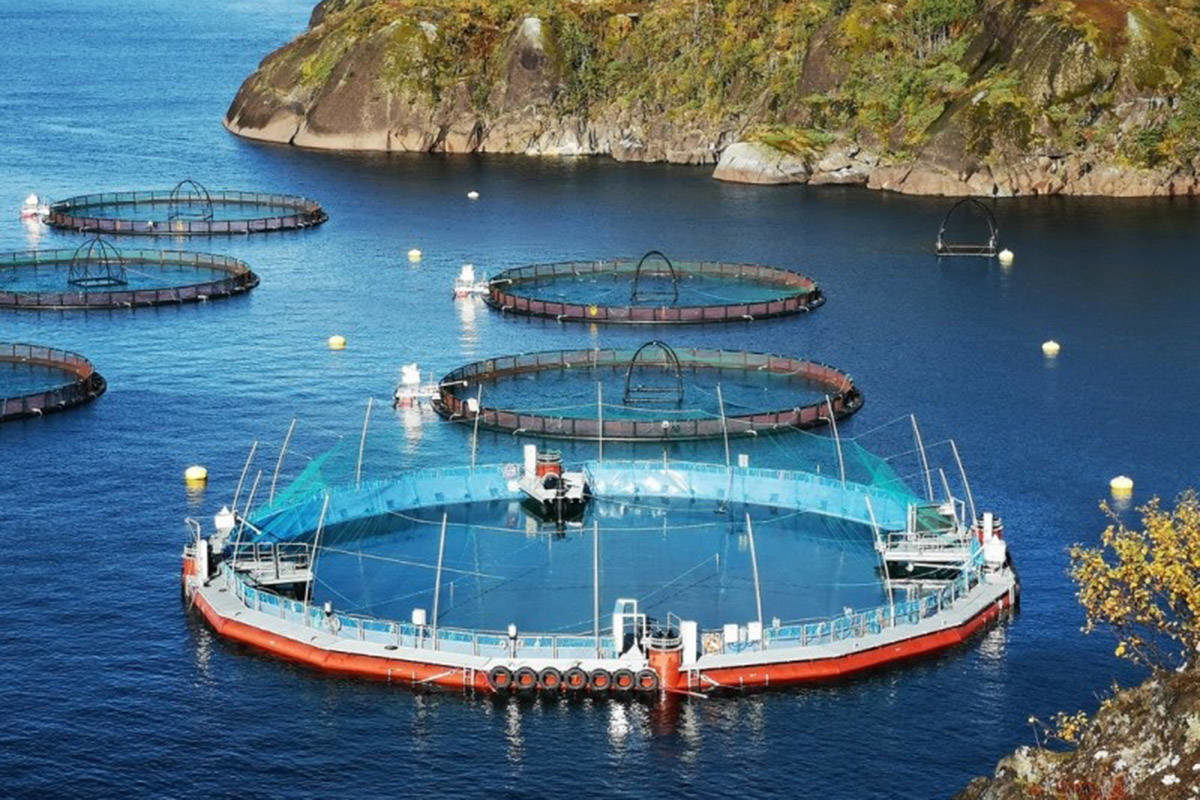New technologies, including computer control systems, have started to be embraced by traditional aquaculture activities. Huge amounts of operational data are generated, which makes it possible to benchmark, track and compare their yields (Sarraipa, et al., 2016). Aqua farmers know that physiological levels of cultivated species and final process outputs can be controlled by monitoring the environmental conditions and system inputs. This trend is especially present in Norway, where the fish farming industry is responsible for 65% of the world’s supply of Atlantic Salmon (Hoel, 2019). The leadership of Seafood Innovation Cluster has decided, in order to solve the problem of marine lice, to work with IBM and Norwegian aquaculture companies to develop AquaCloud. This software automatically gathers sea lice numbers and other relevant data from ERP systems and brings them into a predictive model which can accurately predict marine lice outbreaks over a two-week horizon.
To produce this software, IBM has collaborated with seven of Norway’s leading. This shows the downside of the emerge of big data analysis in the agriculture industry. Investing in the technology required for managing data can often be costly and out of reach for certain fish farms (Howell, 2019). It can be predicted that these type of data processing will only be assessable to highly profitable fish farms, making the entry barriers higher. It could also build a two-tier system within the industry that would rapidly grow big businesses using the technology and make smaller producers unable to compete (Howell, 2019). Furthermore, Automating aquaculture processes could also change the sector’s nature, in particular as regards labor practices.
The use of Big Data is expected to have a positive impact on the output of the industry. However, there are also downsides of the introduction of this strategy into this industry. Can you think of a way of being able to benefit from the positive side of data management while minimalizing the negative impact?
Howell, M. (2019). Big Data dividend?. [online] Thefishsite.com. Available at: https://thefishsite.com/articles/big-data-dividend [Accessed 17 Oct. 2019].
Sarraipa, J., Seferis, K., Prieto, V., Cleere, G., McManus, G., McLaughlin, J., … & Davy, S. (2016). Aquaculture Production Optimization through Enhanced Data Analytics. present at Offshore Mariculture, 6-8.
Tanja Hoel, T. (2019). Data science helps Norway’s fish farmers keep salmon populations healthy. [online] Cloud computing news. Available at: https://www.ibm.com/blogs/cloud-computing/2018/09/17/data-science-norway-fish-farmers/ [Accessed 17 Oct. 2019].

